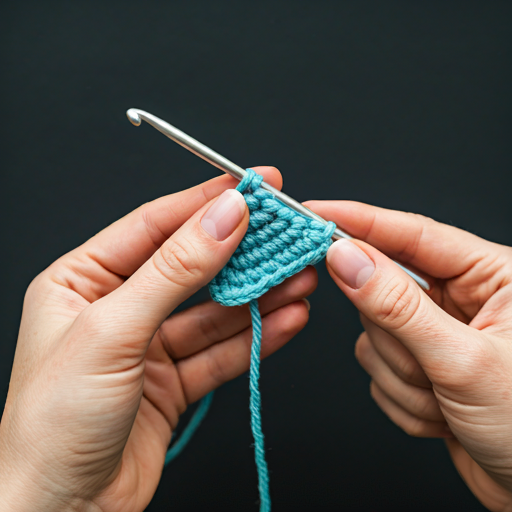
Beginner’s Guide to Crocheting: Everything You Need to Get Started
Knit HappensShare
Crocheting is a fun and rewarding craft that’s perfect for anyone looking to create handmade items while relaxing and unwinding. Whether you want to crochet a cozy blanket, cute plush toys, or stylish accessories, learning the basics can open up a world of creative possibilities. In this beginner’s guide to crocheting, we’ll cover everything you need to know to get started, including essential tools, basic stitches, and helpful tips for your first project.
What Is Crocheting?
Crocheting is a needlework technique that involves creating fabric from yarn using a crochet hook. Unlike knitting, which uses two needles, crocheting only requires a single hook to create stitches, making it a great choice for beginners. With just a few basic skills, you can start making beautiful handmade projects in no time.
Essential Tools for Beginner Crocheters
Before you begin your first crochet project, you’ll need a few basic supplies. Here’s what you’ll need:
Yarn
The type of yarn you choose can make a big difference in your crocheting experience. For beginners, it’s best to start with medium-weight yarn (also known as worsted weight yarn). It’s easy to handle and comes in a variety of colors and textures.

Crochet hooks come in different sizes, and the size you choose will depend on your yarn. A 5mm (H-8) hook is a great starting point for beginners using medium-weight yarn. Look for ergonomic hooks that are comfortable to hold, especially if you plan to crochet for long periods.

Scissors
A good pair of scissors is essential for cutting yarn. Look for small, sharp scissors that are easy to handle and store in your crochet kit.

Stitch Markers
Stitch markers help you keep track of your place in a pattern, especially when working on larger projects. They’re small, clip-like tools that you can easily attach and remove.

Measuring Tape
A measuring tape is useful for ensuring your project is the right size, especially for garments or accessories.

Yarn Needle
Also known as a tapestry needle, this tool helps you weave in the loose ends of your yarn once your project is finished.

Understanding Yarn Labels
When you buy yarn, you’ll notice a label with important information. Here’s what to look for:
- Yarn Weight: Indicates the thickness of the yarn (e.g., light, medium, bulky).
- Hook Size Recommendation: Suggests the hook size that works best with the yarn.
- Fiber Content: Tells you what the yarn is made of (e.g., wool, cotton, acrylic).
- Care Instructions: Provides washing and care tips for your finished project.
For beginners, stick to medium-weight acrylic yarn as it’s affordable, easy to find, and works well with various patterns.
Basic Crochet Stitches You Need to Know
Mastering a few basic stitches is all you need to get started with your first crochet project. Here are the essential stitches to learn:
Chain Stitch (ch)
The chain stitch is the foundation of most crochet projects. To create a chain stitch, make a loop with your yarn and pull it through with your hook.
Single Crochet (sc)
The single crochet is one of the simplest and most common stitches. Insert your hook into a stitch, yarn over, pull through, and complete the stitch.
This stitch creates a taller, more open stitch. Yarn over, insert your hook into a stitch, yarn over again, pull through, yarn over, pull through two loops, yarn over, and pull through the last two loops.
Slip Stitch (sl st)Used to join pieces together or move along your project without adding height, the slip stitch is created by inserting your hook into a stitch, yarning over, and pulling through both loops.
Tips for Your First Crochet Project
Start with a Simple Project
- Choose a beginner-friendly project like a dishcloth, scarf, or simple plush toy. These projects are small, use basic stitches, and allow you to practice without feeling overwhelmed.
Practice Your Tension
- Tension is how tightly or loosely you hold your yarn while crocheting. Practicing even tension will help your stitches look consistent and make your project turn out better.
Learn to Read Crochet Patterns
- Crochet patterns use abbreviations to save space. For example, "ch" stands for chain stitch, and "sc" stands for single crochet. Familiarizing yourself with these terms will make it easier to follow along.
Don’t Be Afraid to Make Mistakes
- Mistakes are a part of learning! If you make a mistake, don’t stress—just pull the yarn back and try again. Crocheting is forgiving and easy to undo.
Join a Crochet Community
- Whether online or in person, joining a crochet group can be a great way to learn new techniques, find inspiration, and connect with fellow crafters.
Common Crochet FAQs
Q: How long does it take to learn crochet?
A: Most people can learn the basics in a day or two, but it takes practice to get comfortable. Start with small projects to build your skills.
Q: What’s the best yarn for beginners?
A: Medium-weight (worsted) acrylic yarn is great for beginners. It’s easy to handle, affordable, and comes in many colors.
Q: How do I keep my stitches even?
A: Practicing your tension will help keep your stitches even. If your stitches are too tight, loosen your grip on the yarn. If they’re too loose, try holding the yarn a bit tighter.
Learning to crochet can be a fun and rewarding experience, whether you’re making gifts for loved ones or just looking for a new hobby. With the right tools, a little patience, and a willingness to practice, you’ll be creating beautiful crochet projects in no time. So grab your hook, choose your yarn, and let’s get started—because there’s no better time to begin your crochet journey than now!
